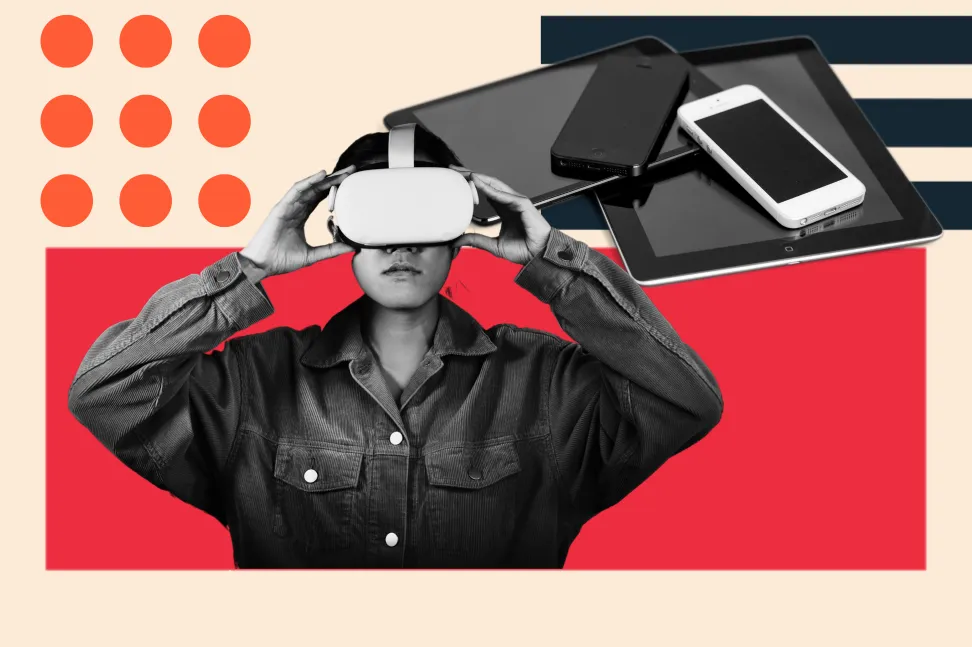For the sake of the chicken and egg debate, user experience is the “egg” in this story, and CX expands on UX by going beyond the product experience alone.

Despite their key differences, they’re often used interchangeably in business today. In this post, we’ll cover why it’s important to understand the difference and how each applies to your business operations.
Table of Contents
- Customer Experience vs. User Experience
- What’s the difference between CX and UX?
- Why the Difference Matters
- How CX and UX Work Together
- CX and UX Examples
Customer Experience vs. User Experience
Customer experience is the impression your customers have of your brand based on all of the interactions they’ve had with your business. User experience is specific to how people use and perceive your products.
What is customer experience?
Customer experience combines the perceptions, feelings, and beliefs that your brand has created for customers throughout the entire buyer’s journey. Think about CX as the overall impression you’ve left on your customers.
Take this example: Your customer is experiencing technical difficulties with your product or service. They submitted a ticket through your help desk portal and spoke with someone on your team to resolve the issue. Here are some CX questions your customer may consider:
- Did this process feel seamless from beginning to end?
- Was the customer service representative friendly and responsive?
- Would I use this company again or recommend it to a friend?
CX is all about how your customers view your brand based on the quality of your products and the people they interact with along the way. And, our recent State of Customer Service Report highlights that 93% of service teams agree that customers today have higher expectations than ever before.
Remember, it’s the little things that make people shout about your company from the rooftops — both the positive and the negative.
What is user experience?
User experience focuses on all of the end user’s interactions with your product or service. Good UX keeps customers happy before, during, and after the product experience.
Using the same example from above, your customer may have asked themselves the following UX questions while using your help desk portal:
- Is this website visually appealing?
- Is the information accessible and easy to navigate?
- Can I use this website on either my desktop or phone?
Check out the video below to watch Don Norman explain the term UX in more detail.
Elements of UX, like intuitive design and minimal product friction, ultimately fit into the greater CX picture. That means creating the best holistic experience possible for your customer —from sales support to, you guessed it, customer service.
While CX and UX are complementary by nature, they don’t always solve for the same things. That’s why it’s still important to understand the differences between the two.
Let’s tackle that next.
What’s the difference between CX and UX?
CX goals are centered around delighting customers at every stage of the brand experience. You can use loyalty and satisfaction metrics to measure CX success. UX objectives focus on improving product design and usability from beginning to end. Successful UX can be measured using task-based metrics.
Target Audience
The audiences that CX and UX processes and tasks focus on are different.
CX target audience:
CX people focus on their customers' entire experience with their business, from the person researching the business to the person who clicks purchase. Sometimes this can be one individual, or it can be multiple people in different departments.
UX target audience:
UX people focus on the actual user of a product or service, regardless of whether they purchased it.
Goals and Objectives
Both CX and UX professionals work toward making (and keeping) customers happy through every business interaction. But, CX and UX strategists have their own unique set of goals and objectives to get there.CX people focus on the entire customer experience, while UX people focus solely on the experience with the offered product or service.
Common CX goals and objectives may include:
- Creating a brand experience that attracts, engages, and delights customers
- Promoting customer satisfaction at every stage of the buyer’s journey
- Generating a steady feedback loop where customers can voice their needs
Common UX goals and objectives may include:
- Designing a seamless product experience with minimal friction
- Developing products that are interactive, fun, and easy to use
- Ensuring products solve the most important problems customers face
In sum, CX professionals work to cultivate positive experiences with your brand. UX professionals focus on improving product interactions to help create those positive experiences.
Metrics and Measurement
There’s no one-size-fits-all approach to measuring the customer experience. But, CX boils down to how satisfied your customers are and how likely they are to recommend you to a friend.
Here are some metrics you can use to measure CX:
- Customer satisfaction — the degree to which a customer is satisfied with your brand based on interactions with your business
- Net Promoter Score® or NPS — a measurement of customer loyalty and how likely a person is to spread the word about your business
- Churn rate and reasons for churn — the number of customers your business is losing in a given period (and why)
A big part of measuring UX requires you to look at the usability of your products. User testing is a great way to find answers to common usability problems.
Here are some metrics you can use to measure UX:
- Website or page load speed — the amount of time it takes for your website to display content
- Time on task — how long it takes your customers to accomplish a goal (e.g., find the help desk portal on your website)
- Adoption rate — the ratio between new users and all users for a product or service
Why the Difference Matters
So, why does the difference between CX and UX matter anyway? Well, for one, distinguishing between internal roles and responsibilities is a must. Your UX team needs to focus on enhancing product usability.
While usability is important on the CX side, a positive brand experience is the true measure of CX success. That said, it’s important for your business to have separate but integrated strategies for each.

The result: happy customers.
Now, let’s talk more about CX and UX across the customer journey.
How CX and UX Work Together
User experience is a subset of customer experience. Without good UX, you likely won’t be able to develop a positive customer experience.
UX is all about products. CX is all about people and products. UX has a direct impact on CX based on how the end user feels about the product or service you offer.
Both concepts work together to create a customer journey with no friction. If you’re unsure about what that journey might look like, try mapping it out. Customer journey maps are a great way to visualize a person’s experience with your company — from start to finish.
And, get this — journey maps can also help you assess the quality of UX and CX at each touchpoint. For example:
- Are there any pain points? Maybe your app is taking forever to load, and people are getting stuck before reaching a goal. That’s UX.
- How are your customers feeling? Maybe they feel supported any time they have an issue and can’t wait to tell their friends about your brand. That’s CX.
The culmination of UX and CX interactions across the customer journey help define how customers feel about you and your products.
CX and UX Examples
CX in Practice
As mentioned, CX tasks are broader and focus on the customer journey. Here are some tasks that a CX team may complete:
- Conduct a customer satisfaction survey to gain insights into people’s experiences with your brand
- Review customer service tickets to identify and address recurring customer issues
- Check brand sentiment on social media to understand how customers feel about the brand
- Analyze churn rates and develop strategies to better retain customers
UX in Practice
UX tasks are focused on a product or service and target the end users who have interactions with/use a product or service. Here are some tasks that a UX team may complete:
- Brainstorm ways to make an app more interactive and fun to work with based on feedback from users
- Run a usability test for a website to identify obstacles that users are facing when trying to use a product or service
- Refresh the visual look and feel of a product or service landing page based on heat maps and usability tests
- Update the information architecture within a user interface so it’s more intuitive for people to navigate
So, in the end, I guess it doesn’t really matter whether CX or UX came first (still Team Egg, here).
Bottom line: The best thing you can do as a business is create the optimal experience for your customers.


![Customer Journey Maps: How to Create Really Good Ones [Examples + Template]](https://www.hubspot.com/hubfs/customer-journey-map_13.webp)
![How to Measure Customer Experience: 8 Metrics 1000+ Service Reps Prioritize [+Data]](https://www.hubspot.com/hubfs/customerexperiencemetrics.webp)
![How AI Image Misuse Made a World of Miscommunication [Willy's Chocolate Experience]](https://www.hubspot.com/hubfs/ai%20image%20misuse%20the%20willy%20wonka%20experience%20%281%29.png)


![How Customer Experience Has Evolved Over the Last Decade [+ 2024 Trends]](https://www.hubspot.com/hubfs/future-of-customer-experience.png)
![Memorable Examples of AR in Customer Experience [+Tips for Implementing the Technology]](https://www.hubspot.com/hubfs/augmented%20reality%20customer%20experience.png)

![How to Implement a Hybrid Customer Service Strategy That Works [Expert Tips]](https://www.hubspot.com/hubfs/hybrid%20customer%20service_featured.png)
